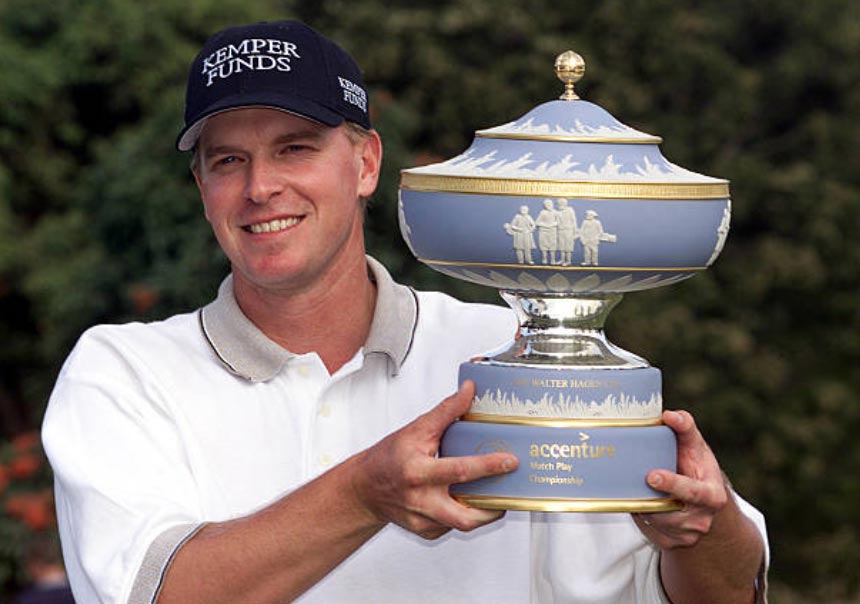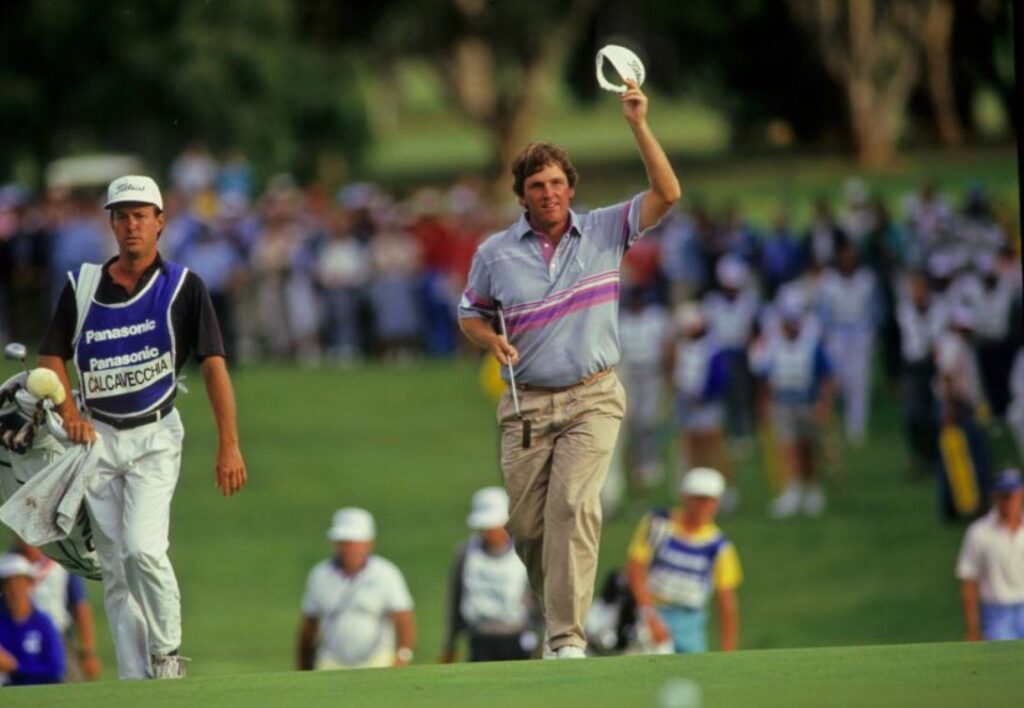[PHOTO: Sarah Reed/Getty Images]
Brendan Steele’s one-stroke victory in the individual section of LIV Golf Adelaide for 2024 continues a trend in Australian golf tournaments that’s perhaps gone largely unnoticed.
As with Talor Gooch’s title a year ago, men’s tournaments here have given rise to a growing legion of victorious American golfers who, it’s fair to say, arrived on our shores largely unheralded. They departed far richer in more ways than bank balances alone.
Steele and Gooch were both PGA Tour winners before their LIV Golf triumphs, but only the most hard-core golf fans would know that. Instead, their most impressive performances have come here, in Australia. They’re also not alone in this department.
Twenty-three years ago, Steve Stricker arrived in Melbourne for the 2001 edition of the now-defunct WGC–Match Play Championship. Likewise already a PGA Tour winner at the time, Stricker authored a matchplay victory at Metropolitan Golf Club that helped revive his career – one that truly took flight later that decade after a period in which Stricker was mired in a deep slump.
While Mexican by nationality, US-born Abraham Ancer fit a similar mould when he won the 2018 Australian Open in Sydney. There are more: Brad Faxon (1993), John Morse (1990) and Mark Calcavecchia (1988) won the Australian Open when each could be described as innocuous Americans at the time they tasted victory in our country. Varying levels of success ensued after their Down Under titles, with Calcavecchia garnering his lone major championship victory eight months after his Australian triumph. Faxon went on to PGA Tour success and Ryder Cup representation, while Stricker went on to reach the world No.2 ranking in an outstanding career second wind.

Steve Stricker claimed the lone edition of the former WGC–Match Play event to be held in Australia, in early January 2001. [Photo: Hamish Blair/Allsport]
Steele is a no-frills professional, one proficient in cultivating anonymity as much as gathering trophies. He won three times on the PGA Tour before joining LIV Golf in February 2023 as part of the HyFlyers squad led by the far less low-key Phil Mickelson. LIV Golf has welcomed a series of high-profile signings, however Steele’s signature went almost unnoticed.
The 41-year-old Californian reached a high-tide Official World Golf Ranking of 35th and has finished in the top-10 just once in 23 major appearances (a T-9 at the 2022 PGA Championship). It’s a good career, just not a great one.
Yet we come here not to shame the new LIV Golf Adelaide champion but to ponder the trend he’s helping to propagate. Why do nondescript American golfers seem to find prosperity here? For Steele, the answer partly lies in the player who is the antithesis of a nondescript American.
HyFlyers captain Mickelson’s influence cannot be undersold. Steele credits the six-time major winner with tightening up his wedge game in particular, but also through helping his thought processes and self-belief.
“He [said] he knew this was coming and he thinks this is going to set off a lot of really good things for me,” Steele said. “For him to have that belief in me is really great. He’s the reason that I’m here and the reason that I’m improving. To be honest, I’m 41 years old and I’m getting better and it’s mostly because of him.”
Rising self-belief is one thing; execution and shrewd decision-making is another. What did Gooch and Steele see in The Grange Golf Club layout that worked to their advantage? Steele says the strategy the course called for worked to his advantage.
“In general, we think of Americans as the big-hitting [players] and we want the big, wide golf courses,” Steele said. “Where I won in Napa twice [at the PGA Tour’s stop each September in California wine country] is a little bit more like this – it’s a little bit more ‘Point A to Point B’. You have to be smart with your strategy.
“In general, I would say as long as you’re driving it really well here, you can get after some [holes], but as soon as you get off the fairways, you’re in trouble. And the fairways [at Grange] aren’t very big for the most part.
“I can’t really put my finger on it, but Talor and I maybe [do] similar things and play a similar game and we’re not the big bombers that you would normally think of, I guess, with Americans.
“I feel really good when I get here,” Steele said of the Grange course. “I understand the shots that it requires, I like the strategy [required], I like not just getting on the tee and whaling driver on every hole… I enjoy that side of it.”

Mark Calcavecchia demolished the field at the Australian Open in 1988 then won the Open Championship in Scotland the next July.
A year ago, Gooch, of course, went on to win the very next week at LIV Golf Singapore. It was a phenomenal double considering the travel plus the different courses and climates. Although as LIV Golfer Paul Casey explained to your correspondent earlier in the week, the Grange and Sentosa layouts call for very similar shots even if they are superficially different and thousands of kilometres apart.
Will this victory act as a launching pad for Steele? Are more LIV Golf titles in his midst in 2024 and beyond? Perhaps. Regardless, his deeds this weekend in Adelaide continue one of the more peculiar – if irregular – runs in Australian golf.



